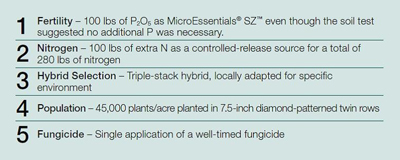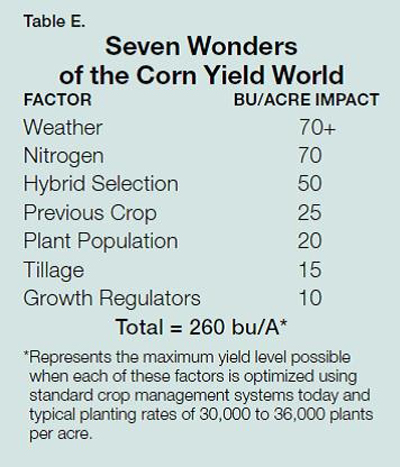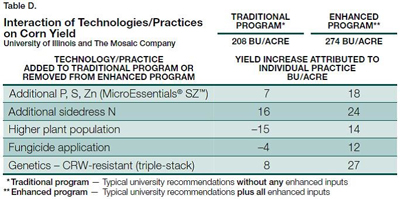Dr. Below’s Five Management Factors for a High-Yield Corn System
World demand for food, feed, fiber and fuel is increasing. Dr. Fred Below and researchers at the University of Illinois at Urbana-Champaign are assessing new technologies and designing management practices to unlock the secret to higher yields. Here he shares details of this effort.
You have spent your entire career looking at corn physiology and factors that impact yield. What are you focusing on in your current research?
There are many new technologies available to growers that are changing the face of crop production and have the potential to drive higher crop yields. For example, today’s genetics are more tolerant of the stresses of higher plant populations. Corn rootworm (CRW) protection now gives us a larger, more intact root system so the corn plant can absorb nutrients more efficiently. Fungicides protect plants from yield-robbing diseases to maintain plant health longer.

In our research, we’ve seen beneficial synergies from combining these management tools. To move to the 300-bushel level and beyond, we have to identify the most efficient ways of combining these tools. In that effort, our research is contrasting standard management practices and planting populations with a high-yield management approach that pushes CRW-resistant hybrids to 45,000 plants per acre, planted in 7½-inch twin rows on a 30-inch center. It also incorporates 100 pounds of extra side-dress N as a controlled-release source as well as 100 pounds of P2O5 as MicroEssentials, even though the soil test suggested no additional P was necessary.
As part of your high-management system, you have ranked seven factors that impact corn yield, and you refer to them as the “seven wonders.” Why are they important to success in high-yield management systems?

The seven wonders are weather, nitrogen, hybrid selection, previous crop, tillage, plant population and a “catchall” I call growth regulators that is represented by the plant-health or performance aspect of fungicides.
However, before we can uncover the full potential of the seven wonders, there are base prerequisites that must be met. They are proper drainage, P and K levels based on higher yield goals and soil test values, plus effective weed control.
Your research shows that nitrogen management has the second-biggest impact on yield, right behind weather, but what does your current research suggest about the importance of managing for P and K levels? There is no doubt in my mind that to achieve high yields, you have to meet base fertility levels in order to get the rest of the seven wonders to reach their greatest potential. Nitrogen, the second wonder, is a major driver in corn yields, but we are seeing that a balanced nutrition approach is critical to helping nitrogen achieve its full value, particularly toward the 300-bushel level.
We are seeing a lot more cases impacted by the classic law of the minimum. If the limiting nutrient is P, K, S or Zn, that one deficiency can prevent the corn from getting the full value of nitrogen applied. This is why balanced fertility is an important management component of the high-yield system I am evaluating.
